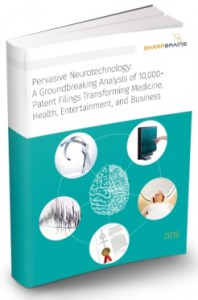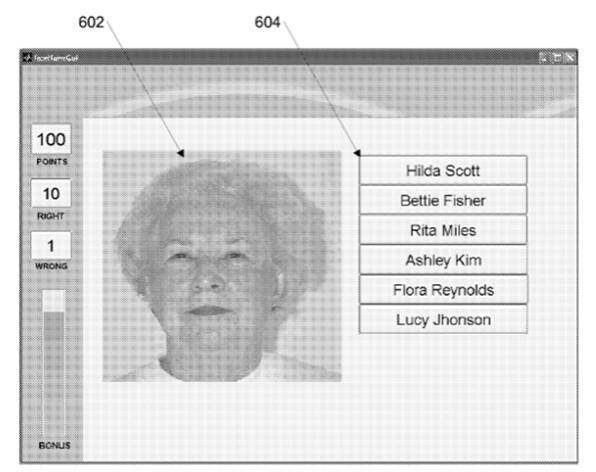Train your brain to remember her name: Key patent for cognitive training system using face-name associations
Today we are sharing a 2012 patent by Posit Science aimed at enhancing cognitive ability using face-name associations.
U.S. Patent No. 8,197,258: Cognitive training using face-name associations
- Assignee(s): Posit Science Corporation
- Inventor(s): Peter B. Delahunt, Joseph L. Hardy, Henry W. Mahncke, Shruti Gangadhar
- Technology Category: NeuroCognitive Training
- Issue Date: June 12, 2012
SharpBrains’ Take:
The facial recognition capacities of the human brain serves a critical function, from when an infant first makes eye-contact with its mother throughout the span of adulthood where we must be able to identify and distinguish other people in order to navigate and operate in society. The ‘258 patent describes approaches relating to not only facial recognition, but face-name associations with training methods that may be applied to both real-world faces (e.g., people in an organization to which a user belongs) or unknown faces (i.e., fictitious or unknown people presented merely for training purposes). Similar to other Posit patent disclosures, the ‘258 patent teaches approaches that may be applied iteratively to vary the level of difficulty as the user learns and improves in skill. The system also considers varying aspects of facial presentation such as view, expression and other variations to modulate the difficulty in making face-name association. The important area of human facial recognition/identification, particularly as a feature worthy of attention in the aging human brain, along with an extensive recitation of variables and approaches for training face-name associations, were among the factors contributing to deeming the ‘258 patent a key non-invasive neurotechnology patent.
Abstract:
Computer-implemented method for enhancing the cognitive ability of a participant using face-name associations. A plurality of facial images of people are provided for visual presentation to the participant, each person having a name. A learning phase is performed, including concurrently presenting a first facial image of a person from the plurality of facial images, and the name of the person. A testing phase is then performed, including: presenting a second facial image of the person from the plurality of facial images, displaying a plurality of names, including the name of the person and one or more distracter names, requiring the participant to select the name of the person from the plurality of names, and determining whether the participant selected the name correctly. The learning phase and the testing phase are repeated one or more times in an iterative manner to improve the participant’s cognition, e.g., face-name association skills.
Illustrative Claim 31. A method for enhancing cognition in a participant, utilizing a computing device to present visual stimuli for training, and to record responses from the participant, the method comprising:
providing a plurality of facial images of people, each person having a name, wherein the plurality of facial images are each available for visual presentation to the participant;
performing a learning phase, comprising:
- presenting a first facial image of a person from the plurality of facial images; and
- presenting the name of the person concurrently with said presenting the first facial image;
performing a testing phase, comprising:
- presenting a second facial image of the person, distinct from the first facial image in that the second facial image comprises a different view or expression of the person, from the plurality of facial images;
- displaying a plurality of names, including the name of the person and one or more distracter names;
- requiring the participant to select the name of the person from the plurality of names; and
- the computing device determining whether the participant selected the name correctly;
repeating said performing the learning phase and said performing the testing phase one or more times in an iterative manner to improve the participant’s cognition,
wherein the second facial image is distorted in form or shape in order to increase the difficulty of the testing.
 To learn more about market data, trends and leading companies in the digital brain health space –digital platforms for brain/ cognitive assessment, monitoring and enhancement– check out this market report. To learn more about our analysis of 10,000+ patent filings, check out this IP & innovation neurotech report.
To learn more about market data, trends and leading companies in the digital brain health space –digital platforms for brain/ cognitive assessment, monitoring and enhancement– check out this market report. To learn more about our analysis of 10,000+ patent filings, check out this IP & innovation neurotech report.



